What does a weevil look like on a strawberry and how to deal with it?
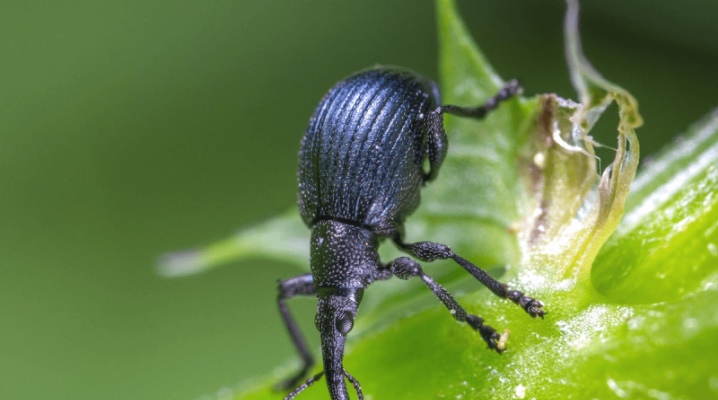
To get a rich harvest of strawberries, it is not enough to plant and process them correctly. Sometimes invisible bugs, which are called weevils, can destroy it. The task of the gardener is to see the danger in time and get rid of it.
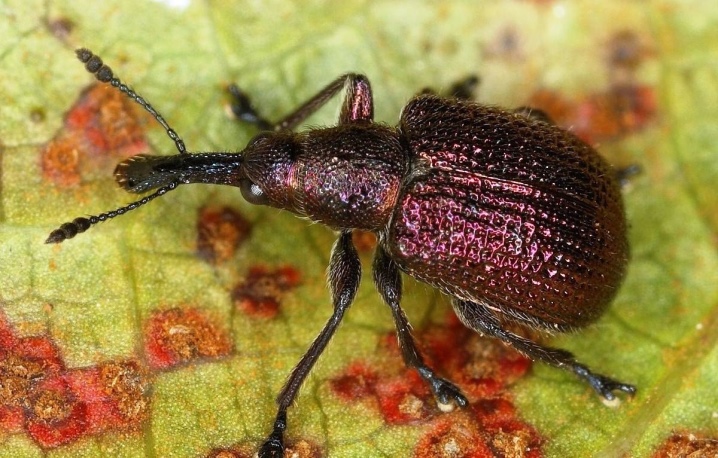
Description of the pest
The scientific name of the pest is raspberry-strawberry weevil (Curculionidae). It can infect both crops, destroying a significant portion of the fruit. Beetles feed on flower buds of plants, calmly move from one bush to another.
The weevil belongs to the order of coleoptera, the family of weevils. The strawberry pest looks like a common beetle. In appearance, it is small, body length is 2-3 mm, including the elongated proboscis located on the head. For this feature, the insect is called an elephant. He has a black body covered with a dense layer of hairs. Pests can perfectly overwinter in waste stems or leaves remaining on the site. If there is no debris, then the weevils simply bury themselves in the soil, winter in the same place, not far from the surface.
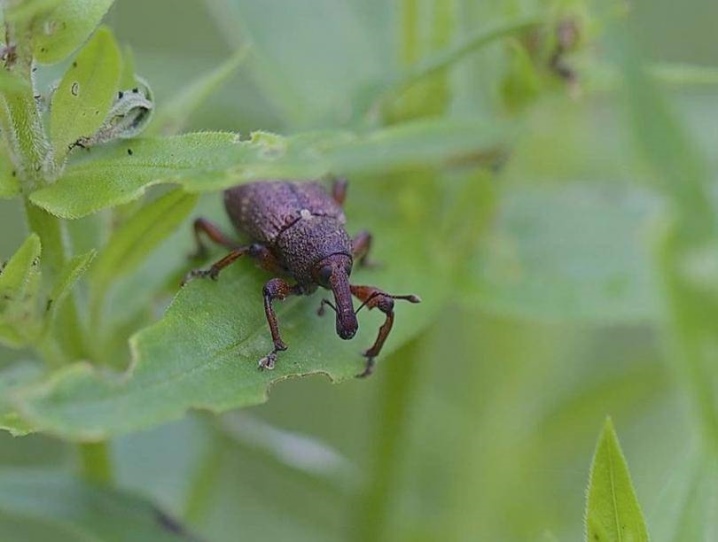
In the spring, as soon as it gets warmer, they begin vigorous activity, feeding on the emerging greenery of plants. Breeding season comes in late spring. The female lays the larvae directly in the buds, distributing strictly one egg into each of them. Protecting the offspring from death, it clogs the hole with its own waste. So that during development they do not disappear, the female slightly gnaws each "incubator". The buds can no longer open, but simply remain hanging on the bush and then fall to the ground.
After a certain time, larvae are born. They have a white body about three centimeters long and a brown head. Gluttonous pests quickly destroy the bud and become pupae. The process of transformation into an adult lasts 8 days. The emerging young beetles again climb onto the shoots of strawberries or raspberries, starting to eat their leaves. Pests leave for wintering when the average daily temperature drops to 10 degrees.
One female can lay up to 50 eggs per season. The emerging weevil on strawberries can destroy most of the crop.
Weevils choose male flower buds for laying eggs. They have delicious stamens that the hatched larvae feed on.

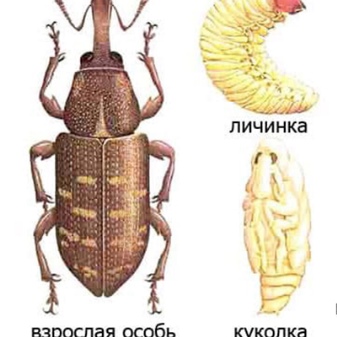
Signs of defeat
In most cases, the presence of a weevil beetle in the garden area remains unnoticed for a long time. Pests become visible when the buds crumble, and even then not always.
These secretive insects require careful inspection of the strawberry bushes at least once a week. Such measures will help to notice and destroy pests in time.
It is worth remembering that a few individuals will not do much harm to strawberries. Therefore, when you see one beetle, you need to destroy it, but do not panic. However, when a whole colony is formed, action should be taken quickly. But the fact is that the appearance of a large number of pests means that the strawberries were poorly looked after. After all, beetles cannot fly from afar. Most likely, the gardener did not notice their appearance for a long time. They, feeling at ease, managed to multiply.
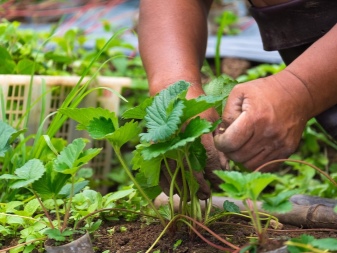
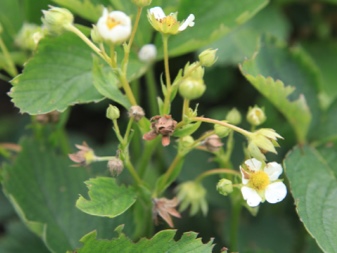
Beetles can crawl or fly from an adjacent area. They feed and hibernate near the places where the larvae can be deposited. Weevils can be seen in early fall or spring. It is then that you should pay special attention to the following signs.
- Barely noticeable holes in the strawberry leaves. Such damage is left by the proboscis of weevils. If there are no beetles, or there are few of them, then the traces will not be noticeable. But when almost the entire surface of the leaves looks damaged, it is worth carefully examining the strawberry bushes in order to start fighting uninvited guests.
- The presence of wilted buds, gnawed stalks. When there are many of them, it is not difficult to determine that there is a pest here.
- The edges of the leaves with traces of damage, as if someone is eating them. Most likely, this is exactly how the traces of the elephant's vital activity look.
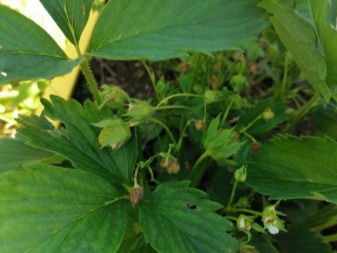

Control measures
When there are few pests, it is not so difficult to deal with them. But you cannot leave everything as it is, without doing anything, it is easy to miss the moment of the rapid liquidation of the colony. Chances are good that you can get a difficult problem, lose crops, or even the plants themselves.
In the best case, the gardener will lose half of the crop. In addition, insects, having multiplied, will begin to destroy neighboring crops with leaves that are tasty for them. Defeating pests will no longer be easy. It will take more than one season to remove a large number of intruders.
Even in a difficult situation, there is a chance to get rid of the problem. The development of a set of measures used in order to save the site from pests helps to quickly and efficiently destroy them. The first processing of strawberries is carried out in early spring. The pest is afraid of the cold and hides in shelters in winter. After the snow melts, the beds need to be spilled with boiling water or sprayed with insecticides.
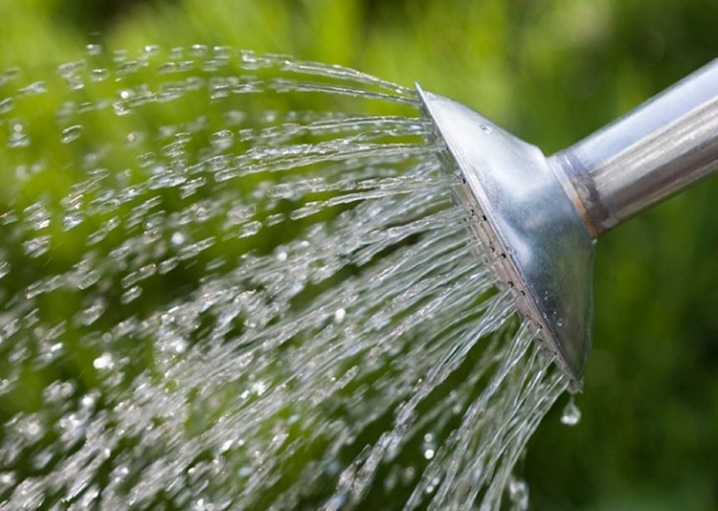
It is possible to kill insects hibernating in foliage by burning it, but here you should observe safety measures and burn the remains in a specially prepared place. It is recommended to water the plot again before flowering. During fruiting, processing must be done with caution. Poisoning beetles is dangerous, as the poison can accumulate in the berries.
Among the many remedies for weevils, a substance such as boric acid should be distinguished. If you sprinkle strawberries with a solution, you can not only get rid of pests, but also improve the taste of berries. To protect the plants from the weevil, the aisles are sprinkled with ash.

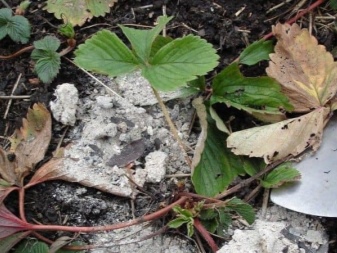
The struggle to preserve the strawberry harvest and protect it from the weevil should be carried out in an integrated manner, using agricultural techniques, chemical and biological preparations. The most effective are the following actions.
- Shaking off beetles on a cloth spread under the bushes. After that, it is quickly collected and the insects are cleaned into a bucket of kerosene. In the morning, when the weevil is not very active, this method is especially good.
- Scattering baits, traps.
- Collection of fallen, withered buds, their immediate destruction.
- Spraying plants with bioinsecticides, decoctions or contact preparations.
- Carrying out autumn preventive measures that contribute to the destruction of the pest.
Spraying with chemicals is carried out only as a last resort, and most importantly - before the first flowers appear.
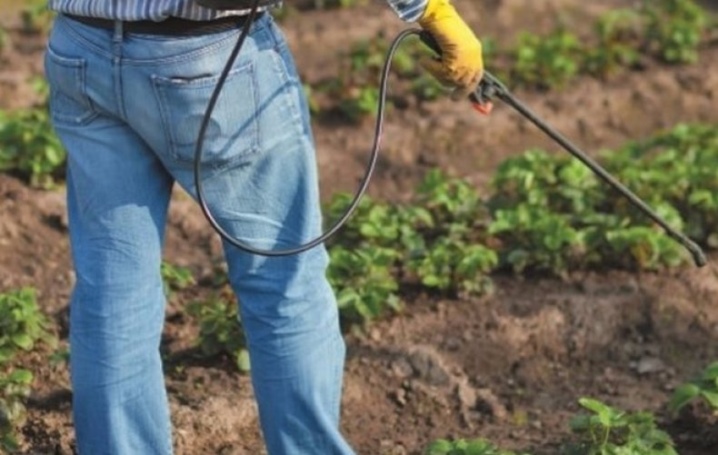
In the fight against a weevil, the following methods are considered the most effective:
- biological;
- chemical;
- folk;
- with the help of other plants;
- by attracting natural enemies.
All this is done in combination with the use of agrotechnical measures (loosening and fertilizing the soil, using the rules of crop rotation, cleaning areas from plant residues).

Chemical
The method of processing strawberry beds with inorganic preparations is called chemical. It is one of the most effective and minimally harmful plant protection methods. Modern drugs fight pests pointwise. Moreover, they kill not only adult beetles, but also their larvae.
When the colony of pests is significant, then industrial insecticides will help to completely destroy them. The main thing is to choose the right remedy. Among the most popular formulations that can be used to treat weevils, the most popular are the following.
- "Fufanon". A modern preparation, toxic to insects, with an unpleasant odor.It can be used when there are no bees nearby. For 1 sq. m it is necessary to dilute 1.5 ml of the product in half a liter of water. In the summer season, two treatments of strawberry plantings are carried out.
- "Kemifos". It has a sufficient level of danger, therefore, the treatment is carried out before flowering on a dry, cool and calm day.
- Actellik. The active substance penetrates inside, thus quickly killing insects. The process takes 3-10 days after processing.
- "Alatar". It has a depressing effect on the motor system of insects, kills them by poisoning. An important property of the drug is that it remains on the plant after rain and watering.
- "Commander". Has a systemic effect. When sprayed on strawberry bushes, it causes paralysis of harmful insects.
- "Ram". The drug is effective at the beginning of budding. Protects strawberries for 4 weeks after processing. In addition to the weevil, it kills pests such as aphids and thrips.
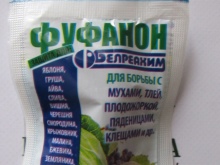
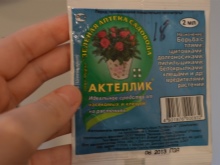
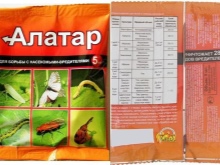
It is important to know that such processing should be carried out a week before flowering and a month before harvesting. To achieve a lasting result and not become addictive, it is recommended to change the drugs. During spraying, it is necessary to wear protective clothing, and after the procedure, take a shower, rinsing off the remnants of the ingested substance.
Biological
The use of insecticides based on natural substances is no less effective. The following biological products belong to this category of protective agents.
- Fitoverm. The composition contains microorganisms. Kills many pests, but is especially effective against weevils. The death of the colony after spraying with a solution of affected strawberries occurs within 5 days.
- Fitosporin. It is used mainly as a prophylactic agent. Low toxicity. A week after processing, you can eat the harvested fruits.
- Green soap. A thick substance with a characteristic soapy smell, used for protection during flowering and fruiting. Penetrating inside the beetle, it becomes glue there and kills pests. It is used in the presence of a small number of pests.
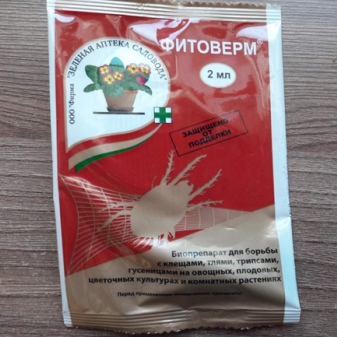
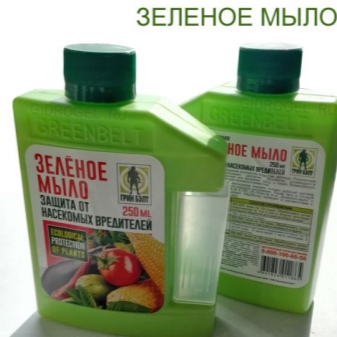
Folk
If the problem is not too acute, it is better to use folk remedies to combat the weevil. They are, of course, less effective, but they can serve as a preventive measure and a way to scare away the weevil. Among the folk remedies that can be used in this struggle, the following are distinguished.
- Iodine. Dissolve a teaspoon of the substance in 10 liters of water. The resulting product is sprayed on all strawberry bushes. To prevent the leaves from getting burned, it is better to work late in the evening or not too hot during the day.
- Ammonia (ammonia). For spraying, 2 tablespoons of alcohol are diluted in a bucket of water. Protects plants during bud emergence.
- Laundry soap. A concentrated solution of soap chips is being prepared. The whole piece is dissolved in a small amount of water, then the concentrate is diluted again in 10 liters. The composition is generously watered with strawberry bushes.
- Mustard. A good way to protect the plant during bud formation. To prepare a solution, 100 g of powder is diluted with 3 liters of boiling water. Use after cooling down. The treatment is repeated several times, every two weeks.
- Tobacco dust. The smell repels the pest after dusting the bushes.
- Garlic. After cleaning, the teeth are crushed and filled with water. Then 100 grams of the resulting raw material is dissolved in a bucket of water. Leaving for a week, let it brew, then filter, add a couple of tablespoons of boric acid or half a liter of coniferous extract. Spray for a week, twice a day.
- Sagebrush. A kilogram of fresh stems and leaves is poured with a bucket of water and insisted for a day. Then bring to a boil, add soap shavings (40 g). The strained composition is used for spraying strawberries.
- Baking soda. Two tablespoons of powder are diluted in a bucket of water, then the bushes are sprayed. Protects against pests during flowering.
- Onion husks. The collected husk is poured with water and insisted for 15 days.Then filter. A liter of solution is diluted in a bucket of water.
- Potassium permanganate. 5 grams of crystals are taken in a bucket of water. You can add hot pepper extract.
- Dentifrice. They are simply sprinkled with aisles. But for the method to work, you will have to repeat the procedure more than once.
- Vinegar. The weevil does not tolerate the smell of vinegar. If you spray with table vinegar diluted in water over the strawberries, the beetles will disappear from the site.
- Birch tar. A piece of laundry soap is added to two tablespoons of the product, and everything is carefully diluted in a bucket of water.
- Nettle infusion. Young nettles are used, which contain substances that repel bugs. The crushed stems are filled with water and infused for two weeks. The product is diluted with water in a 1: 2 ratio just before use.
- Wood ash. With its help, you can not only get rid of the weevil, but also feed the strawberries.
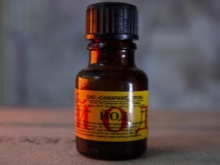
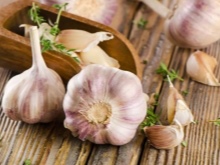

The preparations can be prepared and used at any time without fear of poisoning, death of bees and other unpleasant consequences. The methods are affordable and can be used multiple times throughout the season. Harmful substances do not accumulate in the ground. The disadvantages include a small degree of efficiency.
Use of plants
Some plants can repel pests with their own smell. They should be planted next to strawberry beds to avoid attack by the weevil. Experts advise planting in the garden area:
- onions, garlic;
- dill, parsley;
- basil, celery;
- flowers of lavender, petunia.
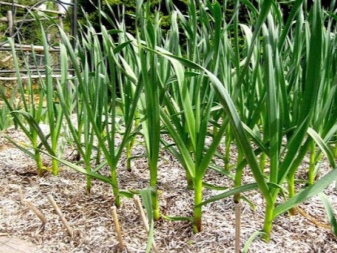
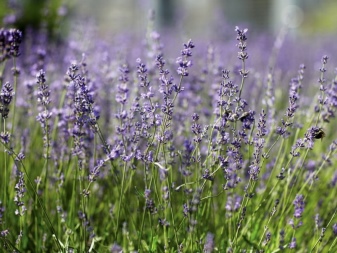
It is better to place these crops around the entire perimeter of the site, including next to the strawberry plot. It is also good to plant a fern in the aisle. Its leaves are not favored by the weevil.
Natural enemies
Natural enemies are of great importance in the fight against harmful insects. Some species of birds, ants, even other insects are happy to eat weevil larvae and the beetles themselves. NSTherefore, you need to put bird feeders in the garden and lure insects with sweet nectar. There is one more enemy - the ground beetle. This is a beautiful greenish-brown beetle that goes hunting at night and feeds on larvae, worms, and some types of insects.
Often, special traps are used to combat the weevil. They are easy to manufacture. A little yeast mixed with sugar is poured into a bottle with a narrow neck. Beetles like this scent, and they crawl inside. The pests cannot get back, therefore they die in sweet syrup. Traps can be changed, exterminating pests in this way, if there are few of them on the site.
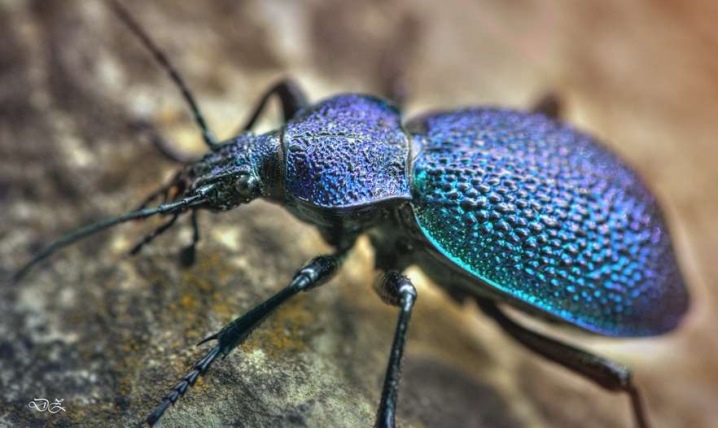
Prophylaxis
When fallen buds appear in the aisles, it will be too late to start fighting the pest. Of course, with the help of potent drugs, the weevil colony will be destroyed, but it will not be possible to return part of the crop. To protect strawberry bushes from weevils, it is necessary in the fall, after harvesting, to remove all plant residues and fallen leaves. It is in it that pests hibernate. Then it is necessary to loosen the ground near each strawberry bush, treat it with protective agents and cover the beds with a layer of mulch.
Only in time, the measures taken will save the sweet fruits. With the help of such prevention methods, the protection of strawberries from pests will increase. In the summer, timely weeding of weeds, strict adherence to processing technologies and growing crops will help prevent the reproduction of weevils.
Strawberries should be inspected and loosened regularly. When organizing crop rotation, plants that can cause the weevil to appear are located away from the strawberry beds. In the spring, for the prevention of pests, the appeared bushes are poured over with boiling water. It won't hurt the plants too much, but it will kill the weevil.
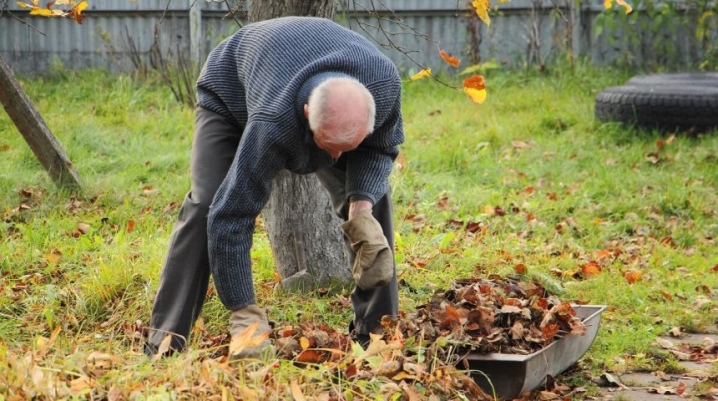
We must not think that the weevil is the most dangerous pest for strawberries. There are a lot of beetles that can inflict no less damage on the crop. And it is also important to understand that in the fight against pests it is better to use the whole range of protective measures.This must be done constantly. Only then can you be sure that the pests will not return.
If a weevil appears on raspberries or strawberries, then you will have to carefully process the entire vegetable garden or garden.
For information on how to deal with a weevil on a strawberry, see the next video.













Good, efficient, to the point. Thanks.
The comment was sent successfully.